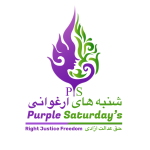The status of women under the rule of the Taliban : the regression period
-
by
admin
The status of women under the rule of the Taliban : the regression period
The Taliban rule in Afghanistan from 1996 to 2001 was characterized by systematic and brutal oppression of women. During this period, women’s rights were severely limited and subjected to widespread restrictions and violations. And in the current period of Taliban rule, this systematic and brutal crime was again inflicted on women, the purpose of this article is to clarify the situation of women under the previous and current rule of the Taliban group, to highlight the challenges they face and its impact on their lives.
1. Education:
In the current government of the Taliban, the presence of women in schools and universities is prohibited. This deprivation of education severely limits opportunities for personal growth, professional development and economic independence. The cruel policies of the Taliban led to a significant decrease in the literacy rate of women and the continuation of the cycle of ignorance and dependence.
2- Employment:
Women were effectively prohibited from working outside their homes, except in limited circumstances such as health care or teaching other women. This limitation in job opportunities marginalized women and made them financially dependent on male relatives and unable to contribute to the country’s economy.
3. Mandatory hijab:
The Taliban enforced a strict dress code known as the burqa, which covers women from head to toe, with only a small mesh panel visible. Failure to comply with this law will result in severe punishment, including beating in public. This forces women to live in constant fear and restricts their freedom of expression and movement.
4. Mobility and public life:
Women were forbidden to leave the house without a male guardian, which was known as Muharram. This restriction severely limits their ability to participate in public life, seek medical care or even visit relatives. Women were effectively confined to their homes, leading to isolation, depression, suicide, and loss of social connections.
5. Health care:
Women’s access to health care is severely limited under the Taliban regime. Female doctors were prohibited from working and women from treating male doctors. This restriction led to a lack of adequate health services for women, leading to increased maternal mortality rates and preventable health issues.
6. Violence and abuse:
The Taliban government is witnessing an increase in violence against women. Public execution, flogging, and amputation were common forms of punishment for flagrant violations of the Taliban’s strict interpretation of Islamic law. Women are subjected to physical and mental abuse including forced marriages, domestic violence and sexual slavery.
7. Cultural repression:
The oppressive Taliban regime seeks to eliminate the contribution of women in the culture and society of Afghanistan. They destroy cultural artifacts, ban music, and suppress artistic expression. This cultural repression marginalized most women and deprived them of the opportunity to express themselves and contribute to Afghanistan’s rich cultural heritage.
8. Impact on future generations:
The Taliban regime has a profound effect on future generations of Afghan women. Deprivation of education and limited opportunities for personal growth have hindered the growth of skilled and capable women’s workforce. This retreat continues to affect the progress of women’s rights in Afghanistan even after the fall of the Taliban.
Result:
The Taliban rule in Afghanistan is a dark time for women, characterized by severe restrictions, violence and oppression. Deprivation of education, restriction of employment opportunities, and the application of strict rules regarding clothing and travel restrictions severely limit women’s rights and freedoms. It is very important to remember this period as a reminder of the importance of protecting women’s rights and ensuring their full participation in society. As Afghanistan progresses, it is necessary to support and empower Afghan women to rebuild their lives and contribute to a more inclusive and just society.

